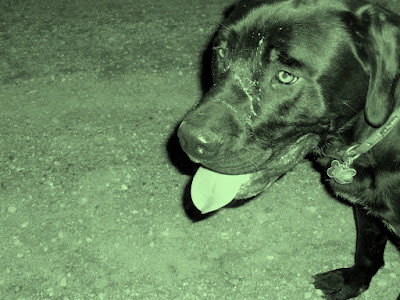An American Indian legend tells us that many, many years ago the Oceti-Shakowin had come together into a large camp. There were no wild game and the people were starving.
Then she came to them. Her name was White Buffalo Calf Women, a young woman more beautiful than any they had ever seen; she was dressed in a gleaming-white, leather dress. She brought a precious bundle as a gift — and taught them many things. Before turning to leave she said she would be back. As she was walking away, she turned into a white buffalo calf. Soon after, great herds of buffalo appeared on the horizon providing the Oceti-Shakowin with meat for food, sinews for bowstrings, skins for clothing --- and tepees, and bones for many tools. Thereafter, white buffalo calves became sacred to the American Indian.
Ernest Harold Haynes Driving his Team of Buffalo Oxen:
shown here in harness though they were trained to a yoke.
Around the turn of the century (1900), naturalist, Ernest Harold Baynes watched a small herd of buffalo stampede up a hill in the Blue Mountain Game Preserve near Croydon, New Hampshire. He was duly impressed with the energy, vitality, and strength of these beasts.
The herd was known as the Corbin Herd after Austin Corbin who had imported some buffalo to his elite private hunting preserve in 1888. Corbin was a wealthy railroad executive who had operated the profitable Long Island Railroad in New York. While at the hunting preserve on June 4, 1896 Corbin was killed. It is believed his coachman’s horses, who were without their usual blinders, spooked at the opening of his umbrella. He was thrown against a stone wall when the carriage upset.
Corbin Herd, Blue Mountain Game Preserve, Croydon, New Hampshire
Corbin was gone, but his hunting preserve continued. Around 1904, Baynes had becom acquainted with Austin Corbin [Jr.] which led to he and his wife living in the park at the Haven Cottage. By 1905 there were 150 buffalo in the park and it was during this time that Baynes witnessed the energy, vitality and strength of the buffalo, he wrote, in the olden days [the buffalo’s] meat meant food for the Indians, but we can get along with other foods; his hide meant tepee covering, where wood and stone mean ours; his fur was fashioned into clothing, while we depend on cloths; his bones made implements which now must be silver and steel; his sinews were strung through bows, but our sportsman demand bullets. No; if the buffalo were to survive, it must not be by any artificial preservation, but by fitting themselves into the plans of men. With these words Baynes set out to domesticate the buffalo for use as a draft animal — to harness their energy, vitality and strength --- as oxen.
A Stylish Man Wearing a Buffalo Robe
Vintage Postcard, 1910
Prior to the nineteenth century the buffalo were described as numbered “numberless." They made the vast prairies of America undulate with motion. Estimates range from thirty to sixty million head.The buffalo’s demise (actually bison, but whoever heard of a bison-nickle) began with firearms and the introduction of horses to the plains Indians in the 1700's. It was hastened in the 1800's by the industrialization of the tanning process, by inroads made into the west with carts, steamboats, and railroads, and by the popularity of buffalo-hide coats in Europe. A robust trade ensued.
Most of the buffalo slaughter took place between 1830 and 1860. Undoubtedly, politics and the problem of the American Indian played a part.
Buffalo Butcher, Batoche National Historic Site --- Diorama

I would not seriously regret the total disappearance of the buffalo from our western prairies, wrote Columbus Delano, Secretary of the Interior in 1873, as a means of hastening [the Indian’s] dependence upon the products of the soil and their own labors.
Another man, by the name of General Phil Sheridan, went before the Texas State Legislature in 1876, apparently opposed to the legislature’s johnny-come-lately efforts to protect the buffalo. Every hunter should be given a medal with a dead buffalo on one side and a discouraged Indian on the other, he said, once the animals are exterminated the Indians will be controlled and civilization can advance.
(continued below)











